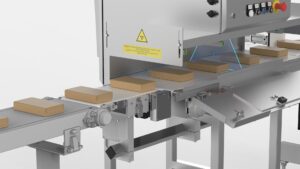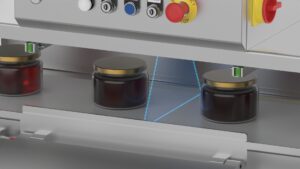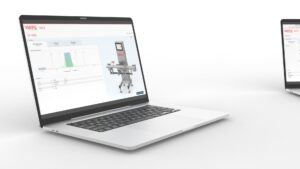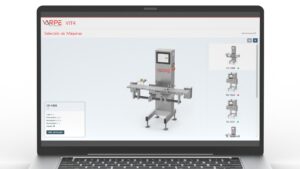Industrial machine vision is a true technological revolution that is redefining the limits of what is possible in Industry 4.0. In this article, we will delve into how this technology is transforming the industrial sector, focusing on its applications, benefits and how machine vision cameras are being integrated into production processes.
Industrial Machine Vision: Key to Industry 4.0
by marketing on 10 de June de 2024
INDUSTRIAL MACHINE VISION: REVOLUTIONISING INDUSTRY 4.0
WHAT IS MACHINE VISION?
Machine vision refers to the use of cameras and analysis software to interpret the production environment. It is like giving machines electronic eyes, allowing them to see and understand what is happening around them. This technology captures images of the production process and, using advanced algorithms, analyses and makes decisions in real-time.

APPLICATIONS IN INDUSTRY
From quality control equipment such as those that detect contaminants to internal factory logistics, checking that products are correctly packaged and shipped without errors, machine vision is making processes faster, more accurate and safer. Machine vision is making processes faster, more accurate and safer. For example, on the assembly line, these cameras can detect defects imperceptible to the human eye.

INTEGRATING MACHINE VISION IN INDUSTRY 4.0
CONNECTIVITY AND AUTOMATION: In the framework of Industry 4.0, machine vision is not only used to see and detect, but is also interconnected with other IoT (Internet of Things) systems. This means that the data captured by machine vision cameras is not only analysed, but also shared and used to continuously improve processes through intelligent automation.

CONTINUOUS PROCESS IMPROVEMENT
The ability to collect and analyze data in real-time enables companies to adapt quickly to new demands and market conditions, improving efficiency and reducing costs. Machine vision cameras play a crucial role in this, providing the data needed to optimise every aspect of production.

BENEFICIOS DE LAS CÁMARAS DE VISIÓN ARTIFICIAL INDUSTRIAL

INCREASED QUALITY AND PRECISION
The use of these cameras guarantees a higher level of quality in the final products. By being able to detect defects that are not visible to the human eye, companies can ensure that only products that meet the highest standards leave the production line.

EFFICIENCY AND COST REDUCTION
Fewer production errors mean less material waste and better utilisation of working time. Machine vision cameras help identify and correct errors quickly, significantly reducing costs associated with defects and returns.

IMPROVED SECURITY
In industrial environments, safety is always a priority. Machine vision cameras contribute to a safer working environment by constantly monitoring risk areas and alerting to unsafe conditions or dangerous behaviour in real time.
FUTURE CHALLENGES AND CONSIDERATIONS
TECHNOLOGY INTEGRATION
Although the advantages are clear, integrating machine vision into existing systems can be challenging. It requires significant upfront investment and adaptation of current work processes.
TRAINING AND SKILLS DEVELOPMENT
Staff must be trained not only to operate the new equipment, but also to interpret and act on the information it provides. This may require ongoing training and adjustments to the work culture.
Machine vision is much more than advanced technology; it is a strategic tool that is shaping the future of manufacturing. With each camera installed, factories are becoming a little smarter, a little more efficient and a little more ready to face the challenges of tomorrow. There is no doubt that, as this technology continues to develop, its impact on industry will be even more profound.